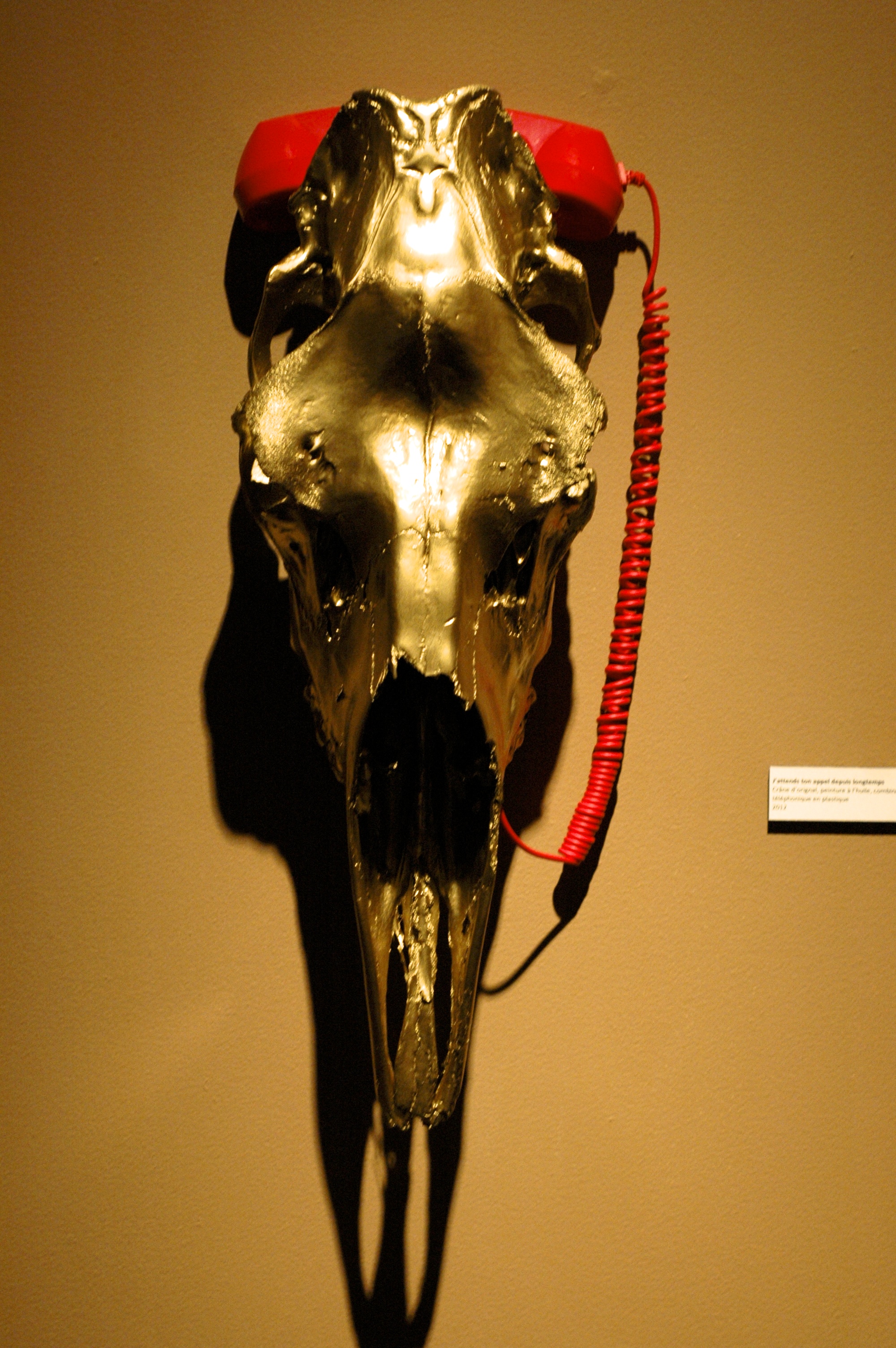Art is widely considered to be therapeutic on an individual level, but what about when it comes to healing the wounds of entire peoples? Eruoma Awashish explores these themes of cultural rupture and reconciliation in her solo exhibit, “Reliques et Passages (Relics and Passages).” The exhibit was on display at the Canadian Guild of Crafts, a non-profit organization that not only serves as one of downtown Montreal’s many independent art galleries, but also as an archive and museum of the fine crafts of Indigenous peoples in Canada. As the Guild contributes to the preservation and promotion of Indigenous art in Montreal, it is fitting for it to host Awashish’s musings on the meaning of cultural preservation.
Awashish is from the Atikamekw community of Opitciwan and received her Bachelor of Fine Arts from Université du Québec à Chicoutimi’s interdisciplinary program. This collection is a compelling commentary on two of the most pressing ongoing dialogues confronted by Indigenous cultures: their complex relationship with the dominant Western colonial culture, and shifting relationship with themselves. The pieces exhibit many natural objects found in Indigenous culture, such as divination bones, bird wings, and dream catchers, set against rich red and gold backgrounds. In every piece depicting a human face, emotive blues are found alongside the gold. Awashish pairs these traditional items with strikingly contemporary objects, as well as red ribbons and stitching, throughout the exhibit.
Diana Perera, a specialist in Inuit art at the Guild, describes the pieces in “Reliques” as the combination of “traditional knowledge and history paired with organic material, presented through a contemporary mindset.” This combination is extremely visible in Corbeau Médecine (Medicine Crow), a piece that sets a feather against an inorganic gold, covered in red stitches. Other notable representations include a red telephone resting on a gilded moose skull, and an animal bone traditionally used for divination that now has a sharp and unnatural black strip of paint running through it. The salience of Awashish’s work lies in her striking juxtaposition of two worlds: first, the organic world from which the Indigenous culture first emerged; second, the Western world that has imposed itself upon and crafted its own version of Indigenous identities. Within this context, these works ask the perplexing question of what happens when a culture so originally steeped in the natural world is confronted with, and must survive within, a highly industrialized and fundamentally settler context such as the city of Montreal.
Awashish makes use of a striking amount of red, bloodlike paint, both morbid and rich, and opulent gold in her pieces. This red color is often painted in splatters, usually in combination with various kinds of animal imagery, such as skulls, antlers, feathers, and wings. What is fascinating about these works is that, despite their suggestion of the deaths of animals, they do not come across as gruesome images of slaughter. Instead, the imagery creates an almost entirely conceptual environment of rupture and wound.
Traditional Indigenous artifacts are depicted in beautiful but bloody environments alongside foreign industrial artifacts in a jarring way. In the artist’s statement, Awashish explains that “a culture that has survived for centuries is one that can adapt and evolve. The First Nations culture is a strong one, because it never allowed itself to be absorbed by a more dominant one. Despite all assimilation attempts, our culture remains and keeps on evolving. It is metamorphosing.” Awashish uses harsh imagery to represent the difficulty of this process of resisting assimilation, but despite all of the red paint, the artifacts retain their distinct shapes and identities.
Awashish does not interpret the goal of preservation as remaining unaffected. Instead, her pieces express how her culture has continued to survive by allowing incorporation without complete assimilation. Each of her works is not only a memory drawn from Indigenous history, but a memory in dialogue with contemporary foreign culture. This is reflected in the title of the exhibition — her culture and its relics are in process, always in passage, and her art is not only strikingly beautiful, but also an integral part of this identity metamorphosis and cultural preservation.

